four studies for Disklavier
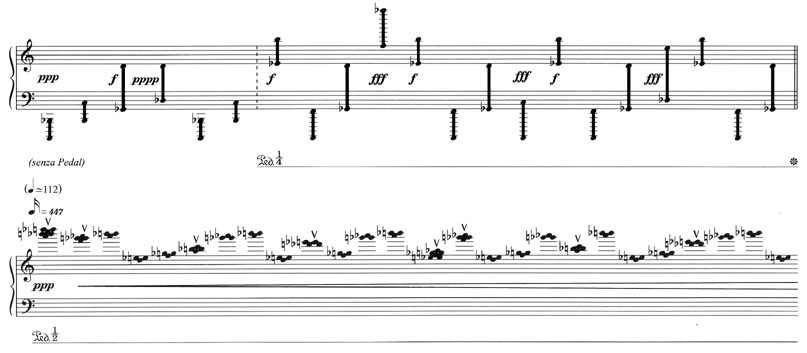
from Anaglyph, by Vasilieous Nikolaou
Despite its complex appearance and self-similar structure Anaglyph was composed entirely with pencil and paper calculation. The next stage in the experimental process was clearly to engage with computer-based systems able to model complex fractal algorithms. It was in this context that Nigel Morgan was approached by York University to tutor Vasilieos in the application of algorithmic composition techniques. As a result of this tutorial arrangement Nigel Morgan wrote two compositions as models and examples of how algorithmic techniques might absorb some of the strategies for composing Vasilieos had developed.
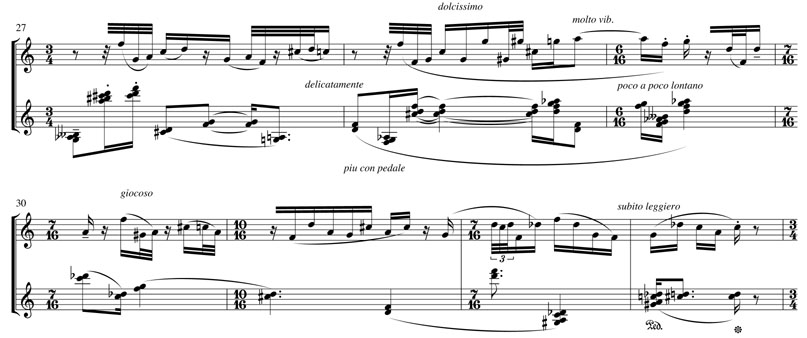
from The Terrain of Inference, for oboe and vibraphone.
music. The title comes from the writings of Greek composer Iannis Xenakis.
textural ideas he was imagining. Over a number of tutorial sessions Vasilieos conjured up ideas and possible instructions to be translated into algorithmic constructs. These experiments were then realised during the tutorials and then refined at a later date by Nigel Morgan into the Four Studies for Disklavier.
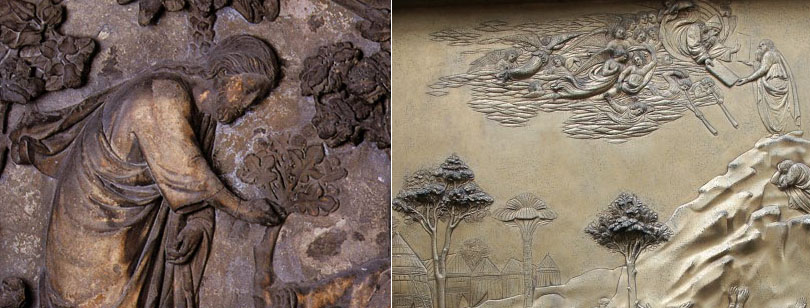
Listen to Study 1
![]() Listen
Listen
to Study 2
The Studies
In Study One a ‘surface’ texture was generated, a cascade of unique collections of pitches using
the whole chromatic pitch continuum across the Disklavier. This chromatic tonality was morphed collection by collection up two octaves. A surface textures was then applied by varying the articulation (the duration) of each note.
In the Second Study a target note of a very short duration was selected in each collection. The companion notes either side of this target note were made to increase in durations as they moved away from the target note, decrease their durations as they moved towards it: an ebb and flow. A chord was then applied to the target note using an algorithm devised from Robert Rowe’s Cypher software (see
Interactions for piano left hand and interactive computer system).
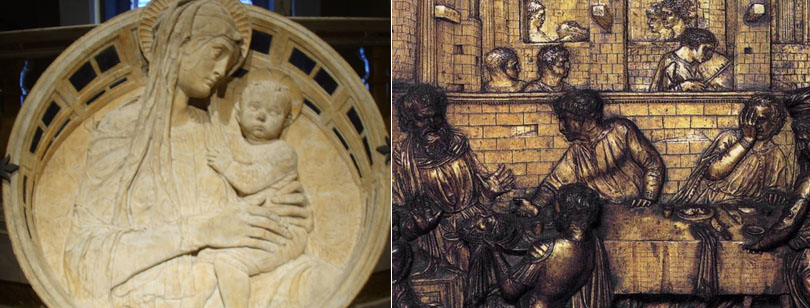
Listen to Study 3
![]() Listen
Listen
to Study 4
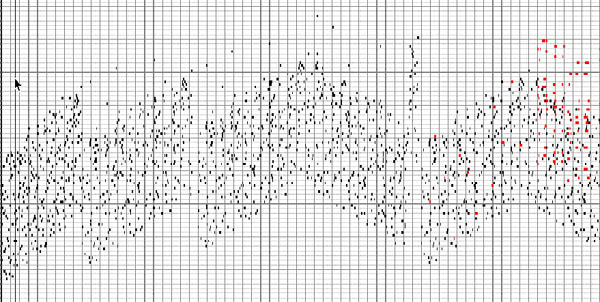
Relievo Schiacciato visualised in a MIDI sequencer.
may also be considered as pure computer music. In the downloadable MP3 file the ornamental group in the complex final study is articulated by random changes of stereo position. In the graphical representation above this ornamental layer is marked in red.
Downloads
MIDI simulation [mp3]
Symbolic Composer MIDI output [MIDI]
Symbolic Composer Score Files [pdf]
